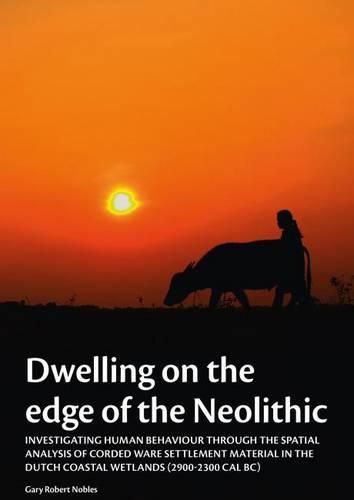Readings Newsletter
Become a Readings Member to make your shopping experience even easier.
Sign in or sign up for free!
You’re not far away from qualifying for FREE standard shipping within Australia
You’ve qualified for FREE standard shipping within Australia
The cart is loading…






This volume presents a detailed spatial analysis of the sites of Keinsmerbrug, Mienakker, and Zeewijk. These Late Neolithic settlement sites define the westernmost edge of the Corded Ware Culture (c. 2900-2300 cal BC). The people took part in a broad spectrum of activities: hunting, gathering, fishing, agriculture, animal husbandry, and artisan crafts. They maintained their regional traditions while dwelling on the edge of this Neolithic cultural group. The study depicts Neolithic households as highly mobile with sedentary and seasonal settlements. The patterns that emerge from the in-depth spatial analysis of material distributions indicate the presence of spatially bound locations for specific activities. This structuring of space further supports the identification of various dwelling structures. Neolithic monumentality is, for the first time, identified within the Dutch coastal wetlands. The biographical perspective underlines the ephemeral nature of the divide between the place of the living and the place of the ancestors.
$9.00 standard shipping within Australia
FREE standard shipping within Australia for orders over $100.00
Express & International shipping calculated at checkout
This volume presents a detailed spatial analysis of the sites of Keinsmerbrug, Mienakker, and Zeewijk. These Late Neolithic settlement sites define the westernmost edge of the Corded Ware Culture (c. 2900-2300 cal BC). The people took part in a broad spectrum of activities: hunting, gathering, fishing, agriculture, animal husbandry, and artisan crafts. They maintained their regional traditions while dwelling on the edge of this Neolithic cultural group. The study depicts Neolithic households as highly mobile with sedentary and seasonal settlements. The patterns that emerge from the in-depth spatial analysis of material distributions indicate the presence of spatially bound locations for specific activities. This structuring of space further supports the identification of various dwelling structures. Neolithic monumentality is, for the first time, identified within the Dutch coastal wetlands. The biographical perspective underlines the ephemeral nature of the divide between the place of the living and the place of the ancestors.